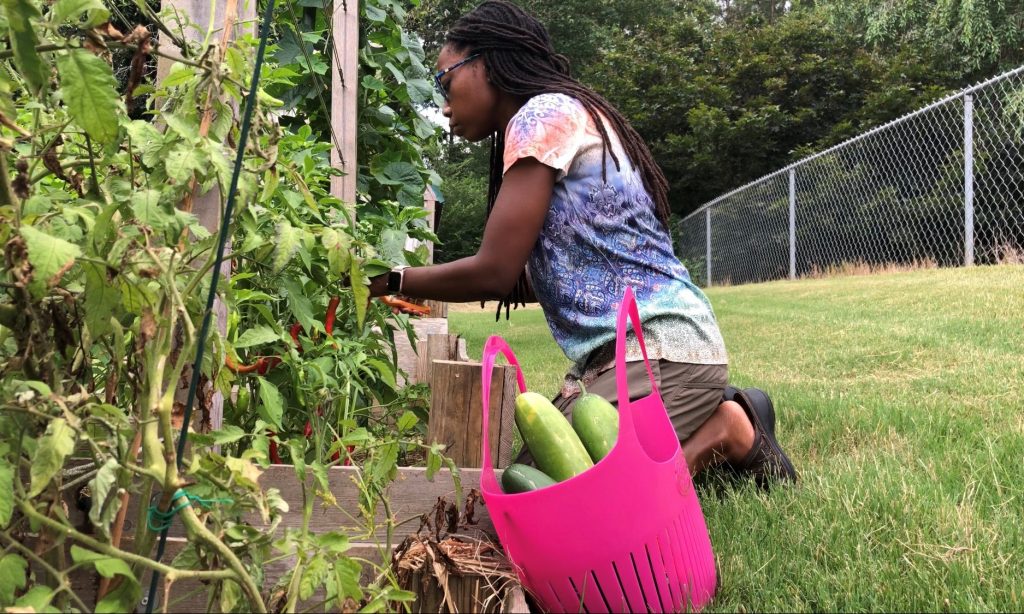The year’s garden is off to a decent start! Overall, it is doing well in spite of my laissez faire, mother-of-an-infant care techniques. Check out its progress in my video below.
This is what we’re growing this summer. The supplier for each is listed in the video:
- Red Jubilee watermelons
- Sangria watermelons
- Candle Fire okra
- Clemson okra
- sweet potatoes
- Roma tomatoes
- Black Beauty heirloom tomatoes
- Beefsteak tomatoes
- rainbow bell pepper
- Red Ember Cayenne bell pepper
- cherry tomatoes
- Diva cucumber
- Marketmore cucumber (not featured)
- Italian eggplant
- Asian eggplant
For herbs, we’re got chives, Italian basil, Thai basil, mint, sage, oregano, parsley, rosemary, and chamomile. Watch my video with tips for growing herbs in a container garden.
Great News!
The melons are reeeeally taking off this year. In years past, I would have 2 edible melons and about 5 that split on the vine due to drastic shifts in weather and watering patterns. This year, we already have at least 6 melons that have made it to 5 lbs! That’s a big deal for me, y’all. Check out the video below to see their growth.
The eggplants are a spontaneous addition this year. I bought the plants as seedlings about 7″ tall and then read about how to grow them. So far, the Asian variety has set 4 and the Italian has set 2.
What’s not included in the video is how to harvesting eggplant. It’s an art form, really. The first indicator is the texture: when the eggplant is firm enough that it just baaaarely gives under your fingers when you squeeze it, it’s ready. On Italian eggplants, the color should be deep and uniformly purple. For the Asian variety, they will always have white and lavender streaks. If the eggplant becomes overripe, the skin turns pale, the seeds become hard, and the flesh is bitter. Ick.
Not-so-great News
My solarizing efforts last year did not kill the wilt virus, so it seems my tomatoes and cucumber are showing signs of it. The video ends with some pointers on what to do with virus-infect soil.